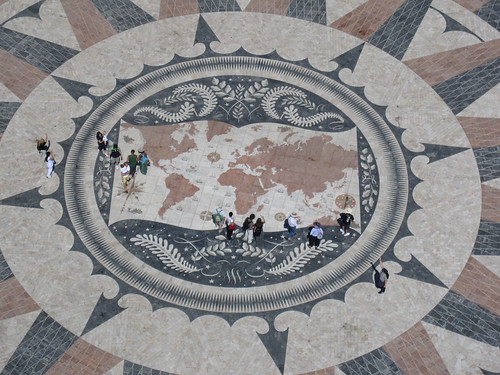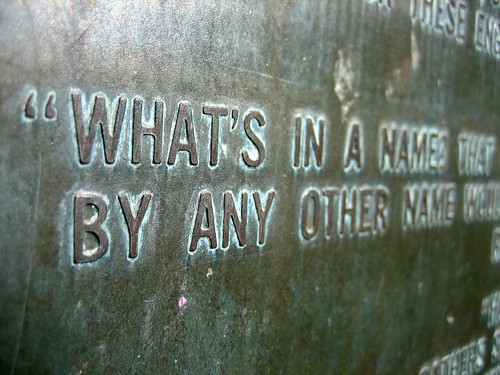The interesting blog on inercultural issues culturallyteaching.com has moved to another site:
Updates, reflections and developments as we explore the importance of intercultural issues in education at Bangkok Patana School.
The interesting blog on inercultural issues culturallyteaching.com has moved to another site:
Teachers without Borders is an organisation that aims to connects teachrs across the globe, it is free to join and has resources and training that also can be accessed free. Thie mission states:
Teachers Without Borders connects teachers to information and each other to create local change on a global scale.
Thier web address is : http://teacherswithoutborders.org

Build awareness of how cultural differences can profoundly impact people in an organization.
Motivate participants to rethink their behavior and attitude toward others.
Allow participants to examine their own bias and focus on how they perceive differences.
Examine how stereotypes are developed, barriers created, and misunderstandings magnified.
Identify diversity issues within the organization that must be addressed. BaFa'BaFa' initiates immediate, personal change. This simulation makes participants personally aware of the issues around culture differences. Participants feel the alienation and confusion that comes from being different. BaFa'BaFa' shakes participants out of thinking in stereotypes of anyone who is different. They learn the value of all faces in the workplace in a safe, stimulating environment.

Matt Jones (Head of Year 10) writes:
In addition to ‘celebrating diversity’, interculturalism in an international school setting should also allow for opportunities to celebrate similarities.
Patana’s IB Psychology students understand the need to consider both ‘emic’ (culturally-specific) and ‘etic’ (universal, cross-cultural) factors when examining cultural norms, differences and similarities. With this in mind, Year 10 students had the opportunity to share ‘symbols’ - personally meaningful aspects of their own cultural identity – with their classmates. It was an opportunity to learn a little more about each other and to exhibit a bit of pride in their own backgrounds. Symbols ranged from national football shirts to soap opera theme tunes: what would you pick as a meaningful representation of your cultural identity?
All credit to Grant Robertson, Head of Secondary English, for developing this excellent lesson. See the plan below.



Bird s do not see the sky, nor fish the water, not unless the bird is plucked out of the sky and the fish is taken out of water. (Thai Proverb via Chamnongsri Hanchanlash, Thai Poet, 2004).What happens when you go and/or live in a different culture? Ettie noted that there is a big difference between youngsters making such moves and adults doing the same, since adults already carry a lot of culture with them. The child is a bit more confused as their identity has not yet been formed in the same way during their formative, developmental years.

Misunderstandings in cross-cultural communication often begins with a misunderstanding of ourselves.
Yamada 1997




Axis of Hope uses its unique case study approach to bring matters of international importance right into the classroom. These case studies have been thoughtfully constructed so as to avoid biases or prejudices and present only the facts. Furthermore, they are designed to promote interactive learning so that each case study includes … six different perspectives of the conflict allowing students to see through the different lenses of those involved. These perspectives are what allow our students to empathize with the involved parties as well as adopt a position and stance from which they can then negotiate.This video at a little over 5 minutes explains the Axis of Hope approach more, and rings true to the potential which this approach holds (as I saw it today) in terms of global citizenship, lifelong learning and international mindedness:
This is an impressive blog which carries the tagline ‘Education across Cultures’. Well worth following, it provides a lot of experience-related ideas and links to some useful resources on intercultural education.
Quoting from their ‘About page’:
Isn’t it interesting that we all grow up learning a culture? And even more interesting, that school is one of the places where we learn it?
We at CulturallyTeaching are fascinated by this connection between education and culture. A favorite elementary school teacher, a student’s interaction with her host mother, even a photo of a school lunch – these stories communicate culture!
Our mission is simple:
1. Document stories about education across cultures
2. Help others become more cross-culturally effective
Source: http://culturallyteaching.com/about/
Here is a sample of popular blog posts:
Sleeping in School - A Cultural Thing?
What Do Bread, Brot and Education Have in Common?
"Checking" Assumptions in the Classroom
I particularly enjoyed this post:
Inter-Cross-Global-Learning-MindednessVisit CulturallyTeaching here.
Hosted on the NY Times’ Lesson Plans Blog, this article called The Cross-Cultural Classroom provides a good overview of some of the issues faced by educators seeking to harness intercultural opportunities within their schools. In particular, Christina Sunnarah focuses on the need for the teacher to develop her own cultural competence in order to better understand her students, and therefore “be as effective as possible with the students” she works with. Her school occupies a unique position culturally, as she explains here, but the ideas resonate well for those of us interested in intercultural education in general.
Here are two quotes:
To be able to know others, especially diverse others, one must know the self. So the growth of a culturally competent educator starts there. We must look within for a deeper understanding of who we are before we can adequately address the needs of our students.
Schools don’t exist in vacuums; they are situated within communities. Community involvement helps me understand the socio-cultural backgrounds of my students’ lives and build bridges between the home and school. This exposure helps challenge my own perspectives and biases.
Image: Creative Commons License (details and further references here)
The idea of culture as an iceberg reminds us that only a smaller proportion of cultural aspects are more ‘visible’ and therefore more obvious than many other facets of culture which, while far less tangible and visible, are just as essential to our understanding of how cultures work. In fact, the sub-surface aspects shown above will directly influence those on the ‘tip’ of the iceberg. For example, religious beliefs influence holiday customs and notions of beauty influence the arts.
In terms of intercultural education at an International School such as ours, the relevance of this analogy is that we need to take care to focus our learning opportunities on the less visible aspects if it is to be genuinely meaningful. That is not to say that celebrating and learning about the more obvious aspects of culture (such as the three Fs - food, flags, and festivals) is not important – far from it. However, without embracing the important stuff beneath the surface, there is a risk that learning events claiming to raise intercultural understanding do not go deep enough on their own.
To quote from an article I have recently written for our Term 2 magazine:
Visible and obvious cultural aspects – such as clothing, flags, food, performing and visual arts - are often essential to culture and are well worth celebrating, as happens during International Day and other school festivals. However, there are also many cultural aspects of any community which may not be so visible. We need to continually provide our students with chances to reflect on the many beliefs, values, assumptions and expectations which they and those around them hold. Similarly, we should explore various attitudes towards gender, age, social status, time, space and more. What notions of beauty, courtesy, friendship and ‘self’ do we hold? And how do these reflect our own cultural heritages?
To facilitate deep reflection on these vital but less tangible aspects of culture we need to embed such opportunities across the full range of age groups and learning activities, both curricular and extra-curricular.
The iceberg analogy of culture is very common. Below are some links to sites that explain the concept further and in some cases offer a related activity.
A 43 page document, with a clear emphasis on the notion of human rights and the role that intercultural education has to play with promoting and guaranteeing human rights.
The preface reads as follows:
The Member States of UNESCO’s governing body have requested the
Organization to continue to “strengthen initiatives in the development of
materials for education and intercultural and interfaith understanding”*. At
the same time the World Programme for Human Rights Education as a UN initiative, coordinated jointly by UNESCO and the OHCHR, lays emphasis on the need for tolerance and respect of all peoples in the world through the inclusion of human rights principles in the school and the curriculum.These Guidelines have been prepared as a contribution to the understanding of the issues around intercultural education. They draw together the key standard-setting instruments and the results of numerous conferences, in particular, the Expert Meeting held at UNESCO Headquarters in March 2006, in order to present those concepts and issues which may be used to guide future activities and policy making in this area.
The document reflects UNESCO’s unique role as international standard setter and convenor of diverse cultural and ideological perspectives. It is hoped that it will serve as a valuable practical resource for teachers and learners, curriculum developers, policy makers and community members alike, and all those who wish to promote Intercultural Education in interests of peace and understanding.
Hosted by UNESCO.
Image: Some rights reserved by tanakawho
Paul Poore, Director of Harare International School, is a preeminent thinker and leader regarding interculturalism in education. Click below to access an excellent speech which he dlivered as the Association for the Advancement of International Education's Distinguished Lecture in 2005.
Culture - The Space between the Bars, the Silence between the Notes by Paul Poore
[Hosted on http://www.nshss.org/]
On 20th November last year, Deepa hosted a 'job-alike workshop' addressing issues of how to effectively incorporate intercultural education into a school's curriculum and ethos. Here, at the end of this post, is the presentation which she developed to start valuable discussion with.
As a result of the productive discussion which followed from this, the following documents were collectively arrived at by the attendees:
1) Definitions of Interculturalism
2) Interculturalism - DEPA - BTN - Lesson Plan Tutorial Programme 1
3) Interculturalism - DEPA - BTN - Lesson Plan Tutorial Programme 2
Thanks to Darren for passing this website on. Geert Hofstede has contributed a huge amount of reserach and ideas to the field of interculturalism, and his name is often referenced in contemporary research. Hofstede's work has been used to develop audits and training resources for helping organisations improve their intercultural literacy, as is evident from the website below.
http://www.geert-hofstede.com/ developed by ITIM International.
Together with his son, Gert, they share some relevant information on their own website which is here:
Thanks to Jane for passing on this valuable article by George Walker hosted on the IB Positions Papers blog. You can access the direct link to the article by clicking the image below.
Abstract:
This position paper addresses the long-standing criticism that the International Baccalaureate (IB) is too closely associated with Western values and, despite its title, does not enable students to see the world from a truly international perspective. Considering evidence from different authorities, it analyses the IB learner profile and asks how appropriate it is for the cultures of East Asia. The paper concludes that the learner profile does indeed reflect the strong Western humanist foundations of the IB, but accepts that the organization’s successful growth (not least in its Asia-
Pacific region) makes sudden change unlikely and undesirable. Instead, it recommends that the learner profile be reviewed regularly and used as a focus for internal debate on this issue. It also proposes that some limited regional variation be encouraged in order gradually to seize “the great opportunity for the creation of new thought by a new combination of truths” (Tagore 1961: 222).Source: http://blogs.ibo.org/positionpapers/files/2010/09/East-and-West_George-Walker.pdf